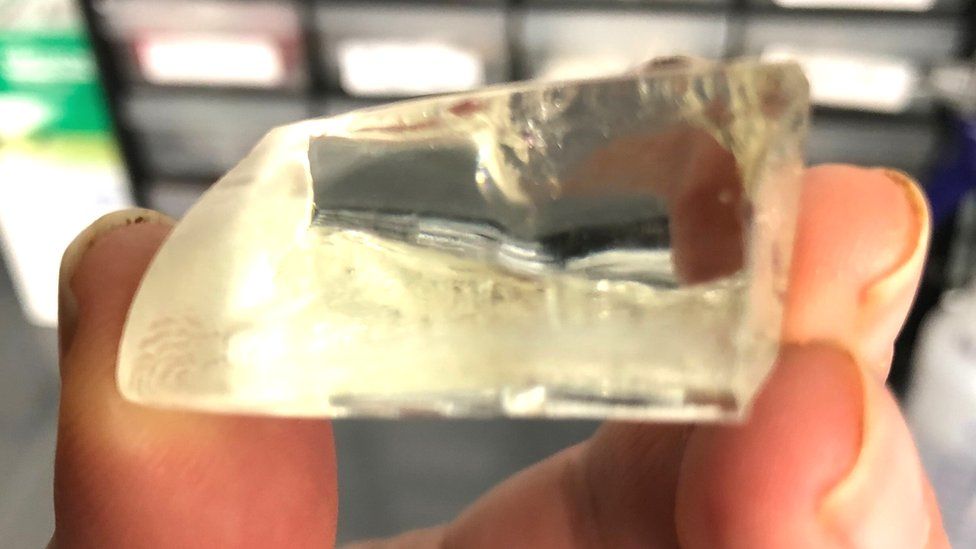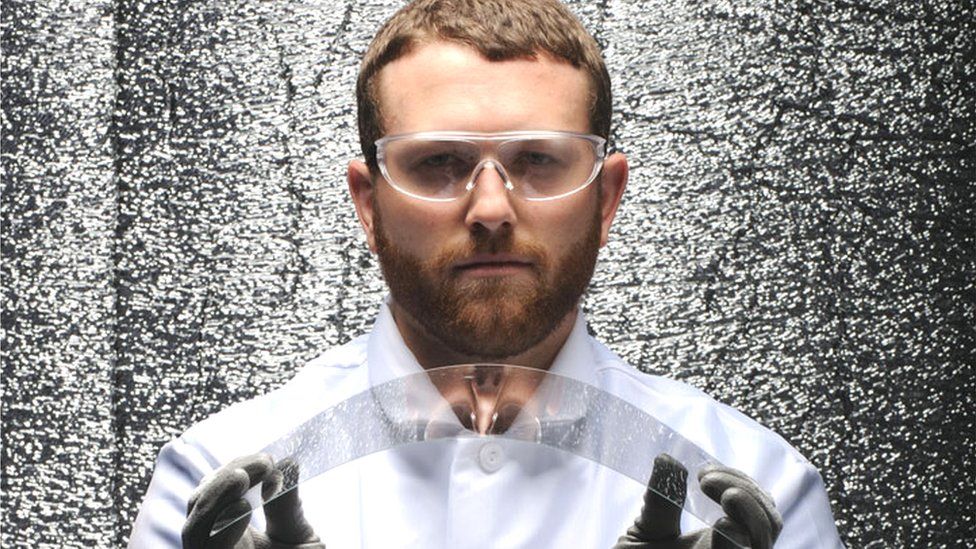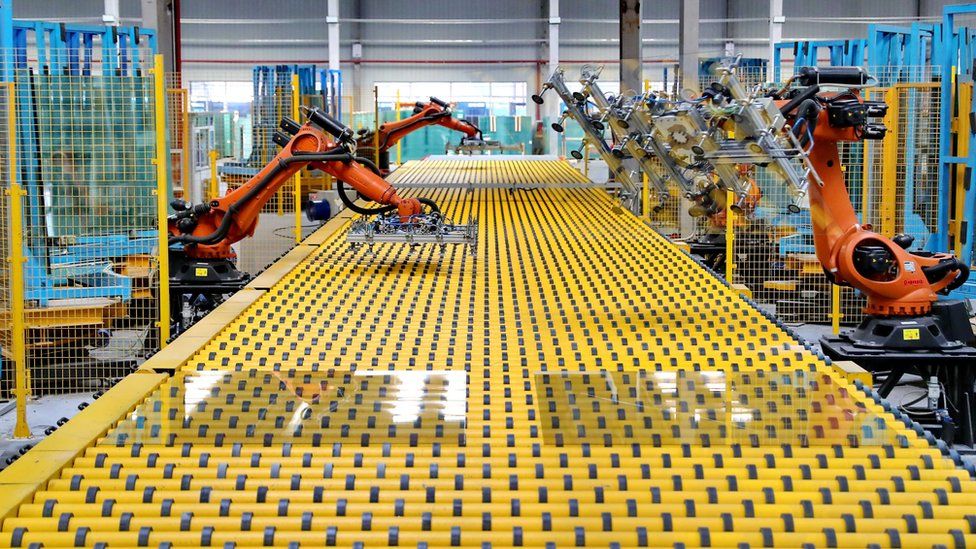The eco-friendly glass that’s hard to crack

There’s laughter over the phone as John Mauro calls out my question to one of his students: just how much pummelling with a mallet does it take to break the new glass they have developed?
“You’ve got to put your body into it,” says Prof Mauro, of Pennsylvania State University, as he describes how the glass must first be scratched deeply with diamond or tungsten carbide stylus – and then hammered by a post-doctoral student wielding a mallet.
Prof Mauro claims the invention, called LionGlass, is ten times stronger than standard glass. Imagine a wine bottle unscathed, even after falling onto a tiled kitchen floor.
However, few details about LionGlass are available as the research has not been published in a peer-reviewed journal yet and the team have only recently filed a patent application.
One key detail is that, unlike standard glass, the production of this glass doesn’t need soda ash or limestone. The alternative ingredients are currently a closely guarded secret.
People have been making glass for thousands of years. Prized for its jewel-like qualities and the fact that it can be formed into intricate shapes, it has nonetheless always had an Achilles heel: it shatters. But perhaps not for much longer.
From car windscreens to champagne flutes, there’s no end to the applications that would benefit from more durable glass.
There’s a lot of competition over who can make the strongest, most sustainable glass at a reasonable price. It could change the world.
“If we really want to have an impact on the carbon footprint, we need to address soda lime silicate,” says Prof Mauro.
Soda ash and limestone release carbon dioxide (CO2) when heated together with quartz sand – a common recipe for glass – and the manufacturing process needs high temperatures, using lots of energy.

LionGlass, by contrast, does not use these carbon-rich materials and its production temperatures are 300C to 400C lower.
The catch is that, because the glass has a lower thermal tolerance than other glasses, it can’t be used for smartphone or tablet screens, which are in high demand.
To make those, glass needs to be able to handle high temperatures during the production process.
“If the glass changes dimensions during that process, then the pixels can actually be misaligned,” says Prof Mauro.
But LionGlass could have many other uses – glass tableware and windows in buildings, for example.
Existing glassmaking facilities should be able to make it without changing their equipment and the glass doesn’t need any further work once it’s made. Its strength is an “intrinsic property of the glass structure”, says Prof Mauro.
LionGlass could have an impact “basically everywhere you see glass,” – apart from smartphones – says Robert Ritchie at the University of California, Berkeley.
Prof Ritchie and colleagues developed a non-transparent glass stronger than steel roughly a decade ago.
A new kind of glass could help architects rethink how they use the material, says Cheryl Atkinson, of Atkinson Architect in Canada. LionGlass, being so strong, could allow for much thinner window panes, for instance.
“That would certainly lighten up the weight of insulated glass units or triple glazing,” she notes, pointing out that this would lower the CO2 emissions associated with transporting the glass.

However, one problem with current window technology is that the plastic seals around the edges of double- or triple-glazed units often fail after a few decades – it’s not all about the quality of the glass itself.
Plus, recognising the importance of energy efficiency, architects including Ms Atkinson are already using less glass in their designs to reduce heat loss from buildings in winter and prevent excessive indoor heating on sunny days.
Prof Mauro’s former employer Corning, famous for its Gorilla Glass used in smartphone, tablet and TV screens, makes other products such as glass for super tough pharmaceutical vials – including for Covid-19 vaccines – and architectural glass for buildings.
The firm has a project looking at “very high-end” energy saving windows, Jaymin Amin, Corning’s chief technology officer, tells the BBC.
One way this could be used is as a very thin layer of glass between two traditional window panes to make triple glazed units that are thinner and lighter than current windows, he says.
Phone glass
In July, Corning reported weakening smartphone demand in a quarterly earnings update.
However, Mr Amin says consumer electronics remains a key growth area for the company.
Smartphone makers are using glass for the bodies of their devices, as well as the screens, partly because this helps the phones receive and transmit high frequency 5G signals, Corning says.
Meanwhile, durability continues to improve.
The Victus 2 Gorilla Glass that Corning launched last year can survive after being dropped onto concrete from a height of one metre. “It was the first time we had a glass with a certified recycled content,” says Dr Amin. “We are heading more and more in that direction.”
One benefit of recycling glass is the lower temperatures needed to make the new product, reducing its carbon footprint.

William Kerwin, an analyst at Morningstar Research Services, emphasises Corning’s success in the field of glassmaking, saying it has more than half the market for glass used for increasingly popular large TV displays.
One rapidly expanding application for glass is solar panels. “That’s one where I think if you asked me five years ago, I wouldn’t have even called it out,” says Mr Kerwin. “And now it definitely is a much bigger deal for the glass industry.”
Solar panel manufacturers are looking for stronger, thinner glass so that they can reduce the weight of the panels, he adds.


But smartphones will continue to be an area of important innovation, says Ben Wood, of CCS Insight.
For example, folding phones “have to withstand tens of thousands, or hundreds of thousands, of folds over the lifetime of the device,” he says.
Consumers are still nervous about whether foldable phones are really robust enough, he says.
These devices make up just 5% of the global premium smartphone market today.
“The dream is unbreakable glass,” Mr Wood adds – which remains a dream for now.
